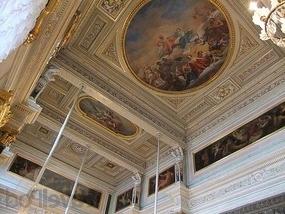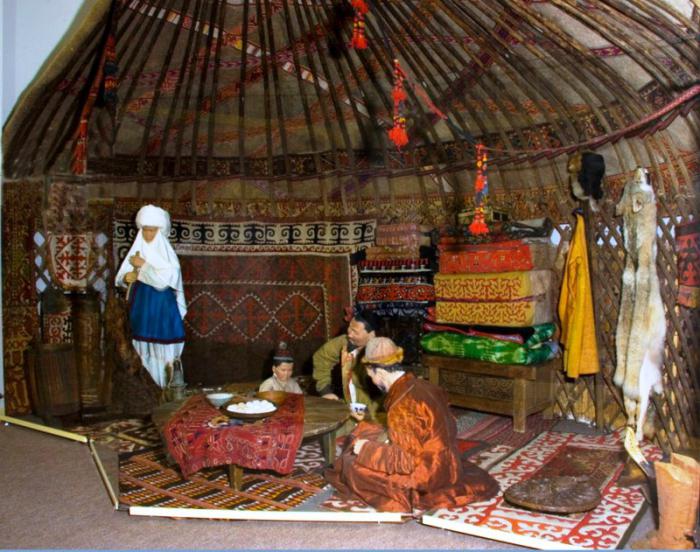Ethnographic museum of the peoples of Transbaikalia, Ulan-Ude: photo, address, opening hours
In the picturesque part of Ulan-Ude is locatedethnographic museum of the peoples of Transbaikalia. In its territory, which is approximately thirty-seven hectares, there are more than forty interesting architectural monuments, and an amazing exhibition numbering eleven thousand items. It is considered one of the largest open-air museum complexes in Russia, whose goal is to acquaint visitors more closely with the history and culture of this region.
Historical facts
The idea of creating such a unique complexbelongs to the famous and talented academician Aleksei Pavlovich Okladnikov, who embodied his ideas in life in 1973. Thus, the Ethnographic Museum of the Transbaikal peoples appeared.
It was founded thanks to the decision of the CouncilMinisters of Buryatia. The department was concerned about the preservation of historical and cultural monuments of Transbaikalia, so it was decided to create such a museum complex.

Description
From the day of its opening to the present daythis interesting exposition enjoys great popularity among the population of the Buryat Republic and its guests. Over the course of the whole year, more than one hundred thousand tourists and local residents can come here. This figure is a great indicator for this region. Ethnographic museum of the peoples of Transbaikalia (Ulan-Ude) introduces all its visitors not only to the history of the region, but also to its material and spiritual culture.
The whole complex is divided into several thematicdepartments, in which each of the visitors can discover something new about ethnic groups and nationalities of the republic. The interest of people to this place does not weaken over time due to the fact that the ethnographic museum of the peoples of Transbaikalia is in constant development. New exhibits and exhibitions are regularly created here, which attracts visitors from all CIS countries.

What to see?
This park-type museum complex consists ofsix exposition departments, which are isolated from each other with the help of natural landscapes. The sequence of their location coincides with the chronological periods of development of this region.
The ethnographic museum of peoples beginsTransbaikalia (Ulan-Ude) from its archaeological department, where you can see the recreated and authentic monuments of ancient times, preserved from the times of ethnic Buryatia. Then there is the Even sector, where various utensils, plagues and labazy of this nationality are demonstrated.
After it follows the Buryat department, whichis a whole collection of yurts made of felt and wood, in the center of which there is an arc - a religious construction in the Buddhist religion. Then visitors enter the pre-Baikal sector, where they can see what the Buryat houses looked like, they had different prosperity. The Transbaikal department will introduce visitors to the history of exile and penal servitude of this region.
Then there is the old-timer sector, where you canSee the house of a farmer, built in 1881, near the barn, a barn and other outbuildings. Perfectly complements this exposition of the cottage of the Cossack ataman.
After him follows the Old Believer department,which is considered one of the most interesting places of the museum and can acquaint guests with buildings that were cut down in the traditions of wooden architecture. This exposition is made in the form of a traditional one-sided street, on which there are houses of Old Believers exiled to the Siberian region in the eighteenth century. The ethnographic museum of the peoples of Transbaikalia finishes the urban sector. Here is a collection of residential buildings of the old Verkhneudinsk.
In all exhibitions of this complex under the openthe sky reflects the material and spiritual culture of the peoples in the form of different settlements that were characteristic of a particular ethnic group. Therefore, they can consistently tell visitors about the history of settlement and all the cultural processes that took place in this region from ancient times to the twentieth century.

Pets' corner
In addition to the main departments, in this museumthe complex operates a wildlife sector. In it you can see almost all the representatives of the Siberian fauna. This area is regularly replenished with new species of animals and birds. Most recently, the Amur tigers, deer and red wolf settled here.
In this sector, you can also see the rare animals of Transbaikalia and learn to take care of them in order to avoid their complete disappearance.
Activities
In addition, this museum complex conductsand a variety of visiting exhibitions in urban educational institutions, thanks to which students can get acquainted with the culture and life of the Buryats, Evenks and other nationalities of this region.
Also, the staff working in the museum are activelyparticipates in various scientific practical conferences, and also conducts research activity. Even on the territory of this park-type complex, every year folk festivities are held in honor of the largest cultural and mass events taking place in this republic.

Reviews
People like to come by whole families inethnographic museum of the peoples of Transbaikalia. The photos taken on its territory show that there are always a lot of visitors of different age groups. Guests of this amazing complex like that all the exhibits depicting the life and history of peoples populating the Buryat Republic are collected here.
The public, who comes here on an excursion,that all the buildings collected here are authentic and brought from the countryside. Thanks to this you can see how the people of this region used to live, and feel the spirit of the era to the fullest.
Children like to come here to see animals that inhabit the zoo, and breathe the forest air. In this complex it is easy to get out with the whole family, since it works on a convenient schedule.

Helpful information
On Mondays and Tuesdays an ethnographic museum of the peoples of Transbaikalia rests. The hours of work will be ironed this way:
Starting from September 16 and June 1, on weekdays, the complex accepts visitors from 09:00 to 17:30, and on weekends - from 10:00 am to 6:30 pm.
In the summer it opens at 10:00 and closes at 18:30 on weekdays, and on weekends - from 10:00 to 19:00.
The cost of an adult ticket is 150 rubles, students can see the expositions for 100 rubles, and schoolchildren and pensioners - for 90 rubles.
Where is?
Do not go far beyond the city to seeethnographic museum of the peoples of Transbaikalia. Its address is as follows: the village of Verkhnaya Berezovka, Museum Street, 17 B. This picturesque place is only eight kilometers from Ulan-Ude. Therefore, it is possible to come to the Ethnographic Museum of the Transbaikalian people by public transport. Any local resident knows how to get there. For example, you can take bus number 37, which goes there from the Square of Soviets. The road will take no more than twenty minutes.









